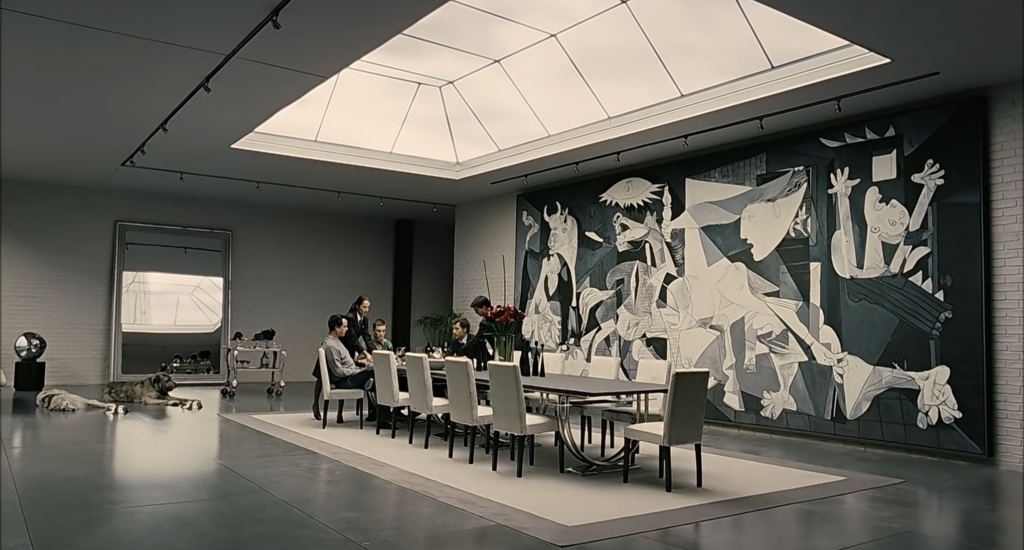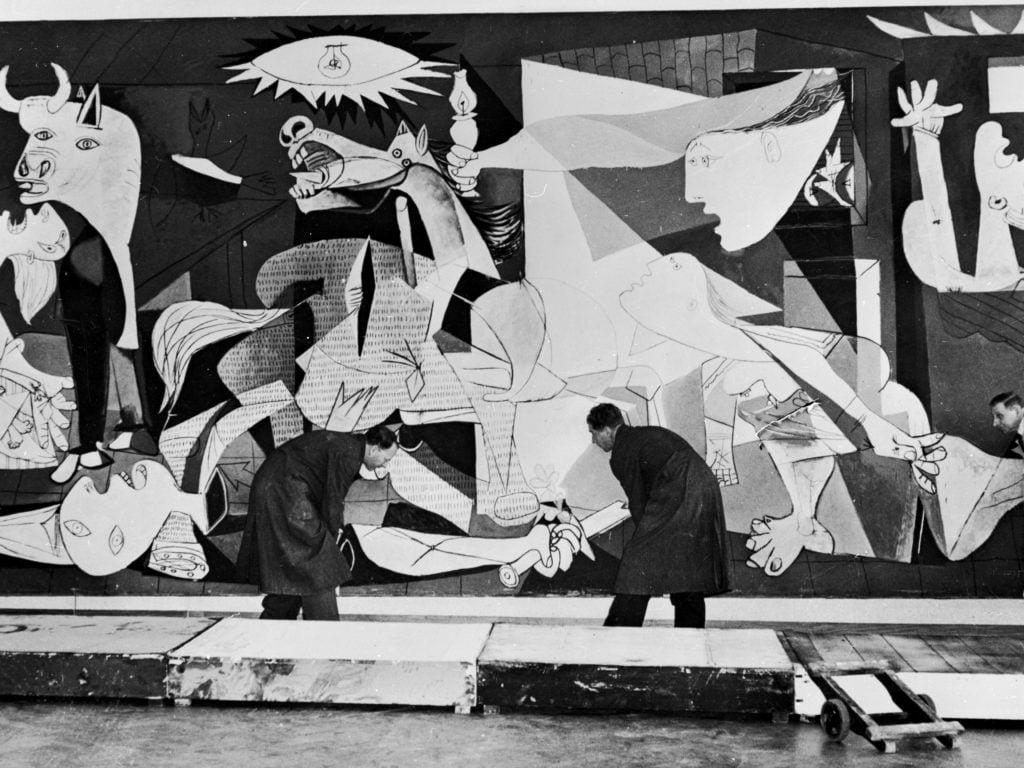Pop Culture
As Seen on ‘Children of Men’: A Picasso Masterpiece Serves as ‘Wallpaper’
Both the film and the painting revolve around conflict and innocence.

Both the film and the painting revolve around conflict and innocence.

Tim Brinkhof

Mexican filmmaker Alfonso Cuarón’s 2006 science fiction thriller Children of Men is set in a not-so distant future where environmental pollution has rendered women infertile, pushing civilization to the brink of collapse. Police state bureaucrat Theo (played by Clive Owen) is roped into a resistance movement when he meets a pregnant refugee carrying mankind’s only baby.
Hoping to provide the refugee with transit papers, Theo pays a visit to his cousin Nigel. A high-ranking member in the British government, Nigel’s spacious, handsomely appointed residence is filled to the brim with “rescued” artwork. “We couldn’t save La Pieta,” Nigel says in reference to Michelangelo’s celebrated sculpture as Theo eyes up the sculptor’s other work, David. “Already smashed by the time we got there. But this is rummy, eh?”
Nigel’s dining room is equally impressive. Sipping a glass of red wine, Theo finds himself in the presence of no less than Pablo Picasso’s Guernica. The enormous 1937 oil painting makes for a stimulating mis-en-scène, though its inclusion in Children of Men goes beyond the aesthetic.
Both Picasso’s painting and Michelangelo’s sculpture are there to establish Nigel’s character—and the British government at large—as one of the film’s antagonists, a corrupt official who fancies himself a refined collector when he’s really just a looter. As Cuarón said of Theo in 2017: “He has the means and the power to put [the art collection] together and yes, he can claim that it is for the good of humanity… But ultimately, he is using those just as subjects of decor.”
“You’re going to put Guernica as a backdrop for your fancy dining table served by butlers? At that point, what does it mean anymore?” he continued. “It’s just wallpaper.”

Picasso’s masterpiece Guernica being installed. Photo: Keystone/Hulton Archive/Getty Images.
More importantly, Guernica appears on the screen because the painting, like the film itself, grapples with themes of war, totalitarianism, and the suffering of the innocent. Picasso named the work after a small Basque town destroyed in the war against Spanish dictator Francisco Franco. Its cacophonic mass of shapes and sharp angles represents the brutality and senseless of war, with the bull, a symbol of fascism, looming over a woman holding the body of her lifeless child.
This description of Guernica doubles as a visual summary of Cuarón’s film, in which the fate of humanity hangs on a woman and her unborn child. “That life impulse—same as anything else in nature,” the director explained, “makes humans keep on going.”
As Seen On explores the paintings and sculptures that have made it to the big and small screens—from a Bond villain’s heisted canvas to the Sopranos’ taste for Renaissance artworks. More than just set decor, these visual works play pivotal roles in on-screen narratives, when not stealing the show.